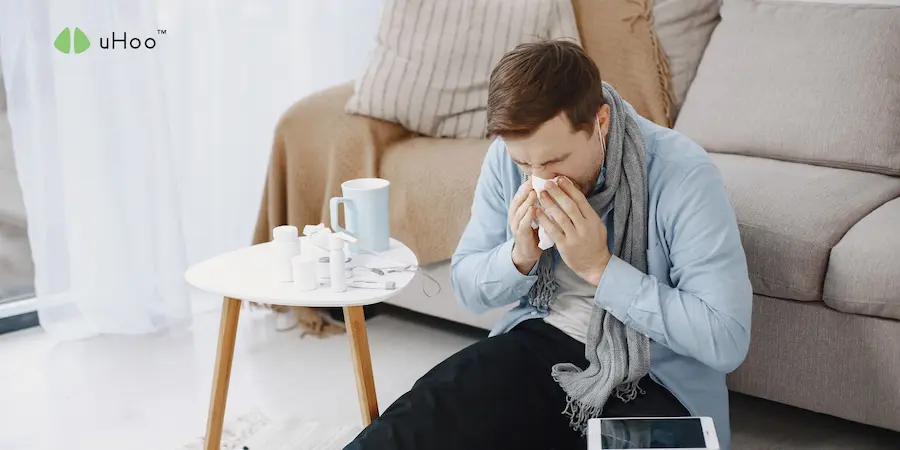For millions, the comfort of home can quickly turn into a battleground against unseen enemies: allergens. Dust mites, pet dander, pollen, mold spores, and even common household chemicals can trigger uncomfortable and debilitating allergic reactions, turning a sanctuary into a source of sniffles, sneezes, itchy eyes, and even asthma attacks.
The good news? You can significantly reduce your exposure to these triggers by taking the following steps to allergy-proof your home:
1. Conquer Dust Mites: The Unseen Invaders
Dust mites are microscopic creatures that thrive in warm, humid environments, feeding on dead skin cells. They are a primary trigger for indoor allergies.
- Encase Mattresses and Pillows: This is your first and most crucial step to allergy-proof your home. Use allergen-proof, zippered covers on all mattresses, box springs, and pillows. These covers create a barrier that dust mites cannot penetrate.
- Wash Bedding Weekly: Wash all sheets, pillowcases, and blankets in hot water (at least 130°F or 54°C) to kill dust mites.
- Minimize Clutter: Dust collects on surfaces. Reduce decorative knick-knacks, books, and other items that gather dust.
- Opt for Hard Flooring: If possible, replace carpets with hard-surface flooring like wood, tile, or laminate. Carpets are notorious dust mite havens. If you must have carpets, vacuum regularly with a HEPA-filter vacuum.
2. Manage Pet Dander: Love Your Pet, Not Your Allergies
Pet dander (tiny flecks of skin, saliva, and urine) is a common allergen, even for those who don’t have pets, as it can be carried into homes on clothing.
- Designate Pet-Free Zones: Keep pets out of bedrooms, ideally entirely, to allergy-proof your home. This creates a safe sanctuary for allergy sufferers.
- Regular Pet Grooming: Bathe and brush pets frequently to reduce dander shedding. Consider professional grooming.
- Wash Pet Bedding: Just like human bedding, wash pet beds regularly in hot water.
- HEPA Vacuum and Air Purifiers: Use a vacuum cleaner with a HEPA filter and consider a portable air purifier with a HEPA filter in rooms where pets spend a lot of time.
3. Combat Mold and Mildew: Stop the Spore Spread
Mold thrives in damp, humid conditions and releases spores that can trigger respiratory allergies and asthma. Learn more through the uHoo Mold Index.
- Control Humidity: Aim for indoor humidity levels between 30-50%. Use a dehumidifier in basements, bathrooms, and other damp areas.
- Fix Leaks Promptly: Repair any leaky pipes, roofs, or foundations immediately to prevent water accumulation.
- Ventilate Bathrooms and Kitchens: Use exhaust fans during and after showering or cooking to remove moisture and allergy-proof your home. Open windows when weather permits.
- Clean Moldy Surfaces: Use a bleach solution (1 cup bleach per gallon of water) or a commercial mold cleaner to remove visible mold. Wear gloves and a mask.
- Avoid Potted Plants in Bathrooms: Soil in potted plants can be a source of mold spores.
4. Block Pollen: Keep the Outdoors, Out
Pollen infiltrates homes through open windows, doors, and on clothing and pets.
- Keep Windows and Doors Closed: Especially during peak pollen seasons (check local pollen forecasts).
- Use Air Conditioning: Air conditioners filter the air, reducing pollen entry. Keep your A/C filters clean to allergy-proof your home.
- Shower and Change Clothes After Outdoor Activities: This removes pollen from your body and clothing before it spreads throughout your home.
- Wipe Down Pets: If your pets go outdoors, wipe them down with a damp cloth before they come inside to remove pollen from their fur.
5. Filter Your Air: A Multi-Layered Defense
Beyond specific allergen sources, improving overall air filtration is crucial to allergy-proof your home.
- Upgrade HVAC Filters: Use high-efficiency pleated filters (MERV 11 or higher) in your heating and cooling system and change them every 1-3 months.
- Consider Portable Air Purifiers: Place stand-alone HEPA air purifiers in frequently used rooms, especially bedrooms.
- Vacuum with a HEPA Filter: As mentioned earlier, this prevents allergens from being recirculated into the air.
6. Monitor Your Air Quality: Invest in a uHoo Air Quality Monitor
You can’t effectively combat what you can’t see. This is where a uHoo air quality monitor becomes an invaluable tool to allergy-proof your home. A uHoo monitor provides real-time data on key indoor air pollutants and environmental factors, empowering you to:
- Identify Hidden Triggers: Pinpoint elevated levels of PM2.5 (particulate matter, including allergens), VOCs (from cleaning products, furniture, etc.), CO2, temperature, and crucially, humidity.
- Track Humidity Levels: Get precise readings on humidity, helping you determine if you need to run a dehumidifier or humidifier to keep dust mites and mold at bay.
- Assess Allergen Levels: While it doesn’t identify specific allergens, a uHoo monitor can alert you to increased particulate matter, which often correlates with higher allergen concentrations.
- Evaluate Your Efforts: See the measurable impact of your allergy-proofing steps. Did that new air purifier make a difference in PM2.5? Is your humidity consistently in the ideal range?
- Receive Real-Time Alerts: Get notifications on your phone if air quality parameters exceed safe levels, allowing you to take immediate action.
By systematically addressing these common allergen sources and using a uHoo air quality monitor to guide and verify your efforts, you can significantly improve the air you breathe at home. The result? Fewer sneezes, clearer breathing, and a truly comfortable sanctuary where you can finally relax and breathe easier.



